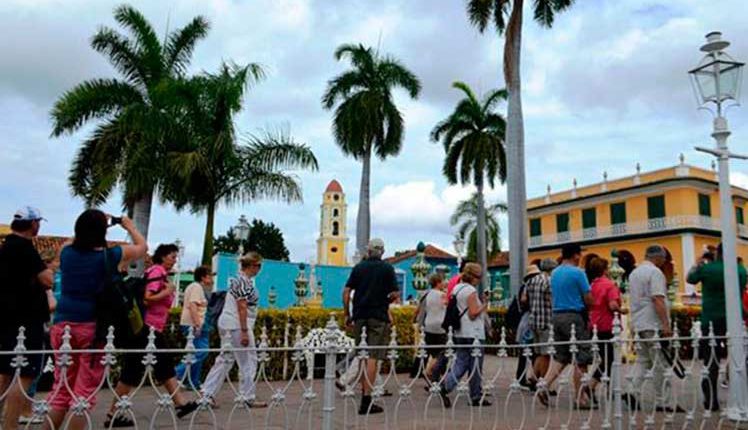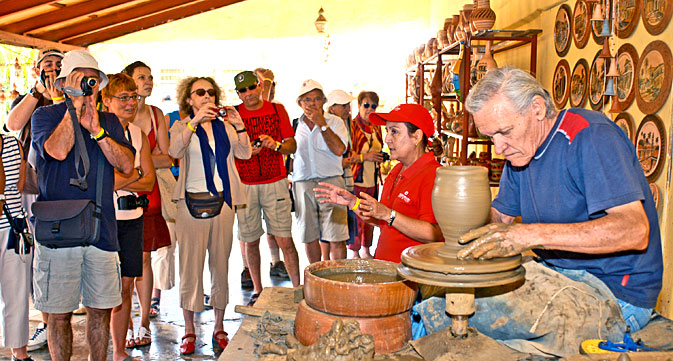
Cuba’s shaky tourism industry
HAVANA – The Cuban National Bureau of Statistics and Information recently published the 2018 “selected indicators” on tourism for the country. Using data provided we analyzed the general behavior of one of the country’s most important income sources. Results, as we will see, do not paint a rosy picture.
Manuel Marrero, Cuba’s tourism minister, said in a November 2018 interview that there are approximately 70,000 hotel rooms that meet international standards in Cuba. He explained that these don’t include facilities used by the government, or that belong to government organisms used to stimulate the work force. Also not reflected in the above figure are the 23,000 rooms (32.8 percent that belong to the State) of the non-state sector for tourism.
However, the occupancy rate for government properties in 2018 was 38.5 percent, four percentage points less than in 2017. The decrease from the previous year indicates that more than half of the rooms available in the country, about 26,000, were not commercialized. One possible reason for this phenomenon could be the high prices being asked for these rooms as compared to those found in the Cuban private sector. A quick search of prices for Airbnb, for example, on Sunday, March 31, resulted in an average of $48 per night, per room, in Havana.
As for where they come from, the largest group of visitors are Canadians, Cuba’s largest tourism market for years. In second place are visitors from the United States, a country where the laws still restrict their citizens from traveling to Cuba. As to these limitations of travel by Americans, you can add the new restrictions imposed by the Trump administration, said Michel Bernal Quicutis, commercial director of Cuba’s Tourism Ministry. He also pointed to the brutal reinforcement of the economic blockade against the Island nation, as well as the prohibition of individual educational travel.
Last year, the U.S. also published a list of Cuban entities, linked to the Cuban armed forces, with whom all economic interaction is forbidden. In 2018, the U.S. Department of State also put out warnings against travel to Cuba.
Cubans living outside of Cuba were the third highest group of tourists who visited the island last year. They numbered 600,306 visitors, a 16 percent increase over 2017. These visitors are Cubans who live in the U.S., Spain, Canada, Mexico and other countries from around the world.
Politics and some of the aforementioned problems were not the only issues that negatively affected the island’s tourism industry last year. Hurricane Irma slammed Cuba in September which left many hotel properties in disrepair — especially in the northern keys. The unexpected natural disaster hit the island just before the start of the high season which resulted in low numbers of visitors immediately thereafter. In fact, September and October resulted in the months with the lowest number of visitors for the year (282,799 and 326,391 respectively).
But interestingly those months actually registered an increase in comparison to 2017 — 11.6 percent higher in September and 8.8 percent in October. December 2018 came back strong with second highest number of visitors for the year — 454,890.
As for regions that provide visitors to Cuba, North America led the list followed by Western Europe, Southern Europe, and South America. Of these, only North America and Western Europe had less visitors to the island then in 2017 — an 11.2 percent decrease.
According to statistics issued, the number one reason for visiting Cuba in 2018 was for leisure and recreation. Those who came for business or professional reasons, or to participate in events, represented less than one percent (0.38%) of the total number of visitors.
As for earnings, the numbers were not good. The areas of lodging and transportation saw a 96 million CUC decrease from the previous year. The only areas that saw an increase in revenue over 2017 were retail, recreation and what are labeled as “other” services.
After a year of disappointing results, the Cuban government is still banking on this promising sector. The country’s National Plan of the Economy presented to the National Assembly of Popular Power last December by the Minister of the Economy, Alejandro Gil, projects 5.1 million tourists visiting Cuba in 2019, a goal that should beat 2018 with an increase of 7.4 percent. And as reported by the Inter Press Service News Agency (IPS), tourism is expected to surpass the 3 billion dollar mark in revenue (which would mean a 17 percent increase over the almost $2.2 billion mark set last year).
According to a statement made by Minister Marrero last November, Cuba’s tourism plan calls for 100,000 more rooms by 2030, or about 9,000 more rooms per year for the next 11 years. Contrast that to the information offered by Cuban President Miguel Diaz-Canel just a few days ago about the result of home constructions in the first quarter of this year, which have fallen behind 2019 projections.
Although the tourism sector is betting heavily on foreign investment, Marrero said that the largest investments have been made with the Island’s limited resources, which are also limited for the housing construction program approved recently by the National Housing Policy.
In the meantime, construction supplies, especially cement, were highlighted as a serious obstacle for the completion of the work projected.
An increase in visitors, and the quality of services and management provided, should translate into better economic results in the future. They are vital in this precarious situation the country and its people find themselves in.


